-
 Israel reopens key roads as firefighters battle blaze
Israel reopens key roads as firefighters battle blaze
-
Europe far-right surge masks divisions

-
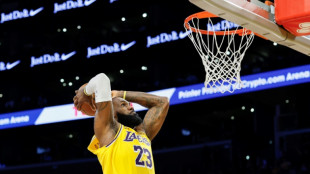 James will mull NBA future after Lakers playoff exit
James will mull NBA future after Lakers playoff exit
-
Ukraine's chief rabbi sings plea to Trump to side with Kyiv

-
 Australian mushroom meal victim 'hunched' in pain, court hears
Australian mushroom meal victim 'hunched' in pain, court hears
-
Lakers dumped out of playoffs by Wolves, Rockets rout Warriors
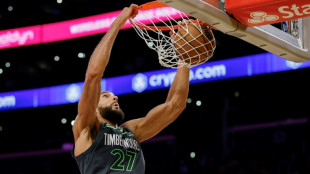
-
 Booming tourism and climate change threaten Albania's coast
Booming tourism and climate change threaten Albania's coast
-
US reaching out to China for tariff talks: Beijing state media

-
 Tariffs prompt Bank of Japan to lower growth forecasts
Tariffs prompt Bank of Japan to lower growth forecasts
-
Kiss faces little time to set Wallabies on path to home World Cup glory
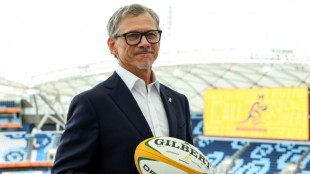
-
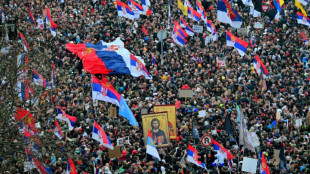 Serbian students, unions join forces for anti-corruption protest
Serbian students, unions join forces for anti-corruption protest
-
Slow and easily beaten -- Messi's Miami project risks global embarrassment

-
 Fan in hospital after falling to field at Pirates game
Fan in hospital after falling to field at Pirates game
-
Nuclear power sparks Australian election battle

-
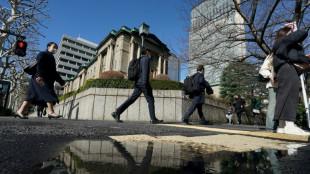 Tokyo stocks rise as BoJ holds rates steady
Tokyo stocks rise as BoJ holds rates steady
-
Bank of Japan holds rates, lowers growth forecasts

-
 'Sleeping giants' Bordeaux-Begles awaken before Champions Cup semis
'Sleeping giants' Bordeaux-Begles awaken before Champions Cup semis
-
Napoli eye Scudetto as Inter hope for post-Barca bounce-back
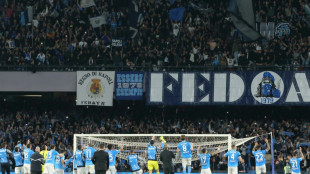
-
 Germany's 'absolutely insane' second tier rivalling Europe's best
Germany's 'absolutely insane' second tier rivalling Europe's best
-
PSG minds on Arsenal return as French clubs scrap for Champions League places
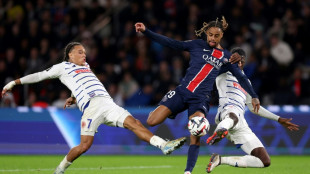
-
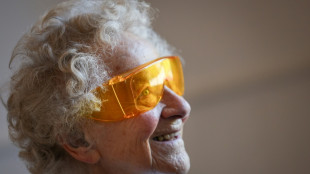 UK WWII veteran remembers joy of war's end, 80 years on
UK WWII veteran remembers joy of war's end, 80 years on
-
Myanmar junta lets post-quake truce expire
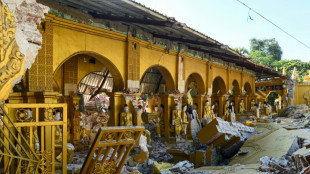
-
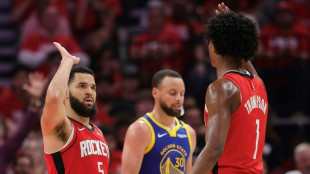 Rockets romp past Warriors to extend NBA playoff series
Rockets romp past Warriors to extend NBA playoff series
-
Messi, Inter Miami CONCACAF Cup dream over as Vancouver advance

-
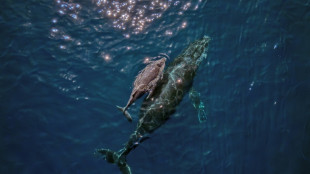 UN body warns over Trump's deep-sea mining order
UN body warns over Trump's deep-sea mining order
-
UK local elections test big two parties
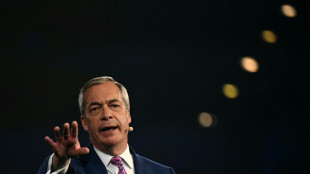
-
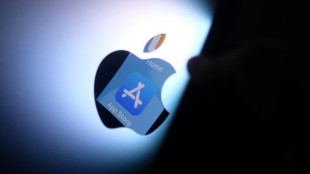 US judge says Apple defied order in App Store case
US judge says Apple defied order in App Store case
-
Seventeen years later, Brood XIV cicadas emerge in US

-
 Scorching 1,500m return for Olympic great Ledecky in Florida
Scorching 1,500m return for Olympic great Ledecky in Florida
-
Israel's Netanyahu warns wildfires could reach Jerusalem

-
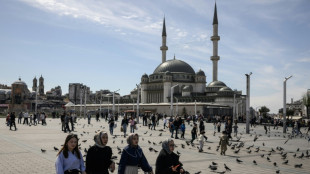 Istanbul lockdown aims to prevent May Day marches
Istanbul lockdown aims to prevent May Day marches
-
Formation Metals Announces Appointment of Adrian Smith to Advisory Committee

-
 Cerrado Gold Announces Q4 And Annual 2024 Financial Results
Cerrado Gold Announces Q4 And Annual 2024 Financial Results
-
Australian guard Daniels of Hawks named NBA's most improved
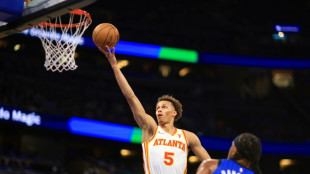
-
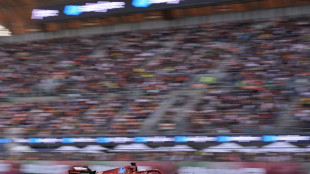 Mexico City to host F1 races until 2028
Mexico City to host F1 races until 2028
-
Morales vows no surrender in bid to reclaim Bolivian presidency
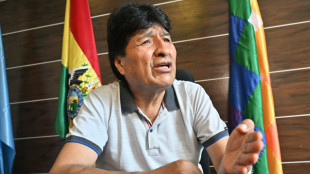
-
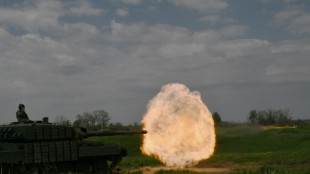 Ukraine, US sign minerals deal, tying Trump to Kyiv
Ukraine, US sign minerals deal, tying Trump to Kyiv
-
Phenomenons like Yamal born every 50 years: Inter's Inzaghi
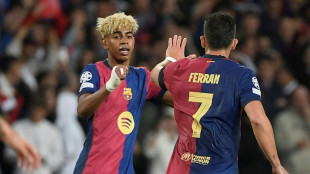
-
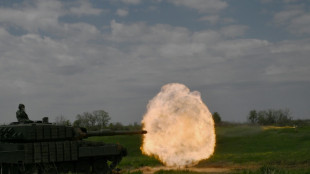 Ukraine, US say minerals deal ready as Kyiv hails sharing
Ukraine, US say minerals deal ready as Kyiv hails sharing
-
Global stocks mostly rise following mixed economic data

-
 O'Sullivan says he must play better to win eighth snooker world title after seeing off Si Jiahui
O'Sullivan says he must play better to win eighth snooker world title after seeing off Si Jiahui
-
Sabalenka eases past Kostyuk into Madrid Open semis
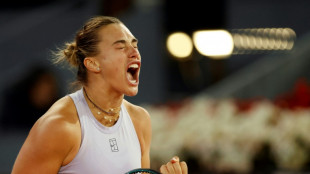
-
 Netflix's 'The Eternaut' echoes fight against tyranny: actor Ricardo Darin
Netflix's 'The Eternaut' echoes fight against tyranny: actor Ricardo Darin
-
US economy unexpectedly shrinks, Trump blames Biden

-
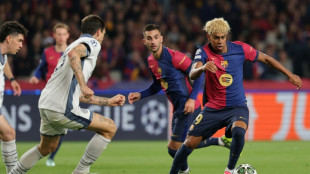 Barca fight back against Inter in sensational semi-final draw
Barca fight back against Inter in sensational semi-final draw
-
Meta quarterly profit climbs despite big cloud spending
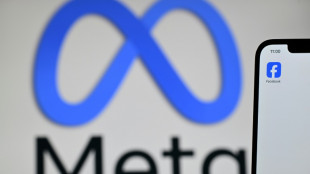
-
 US Supreme Court weighs public funding of religious charter school
US Supreme Court weighs public funding of religious charter school
-
Climate change made fire conditions twice as likely in South Korea blazes: study

-
 Amorim says not even Europa League glory can save Man Utd's season
Amorim says not even Europa League glory can save Man Utd's season
-
Syria reports Israeli strikes as clashes with Druze spread

Pricey pixels: Why people spend fortunes on NFT art
Thousands of artists beaver away every day creating images to sell as digital tokens (NFTs) in online exchanges. The market is booming, the most popular pieces can sell for millions, but outsiders may wonder why anyone would pay anything at all.
No physical pieces of art exchange hands in these transactions. Buyers use cryptocurrencies and receive their NFTs -- a unique piece of computer code related to the artwork that is stored on a blockchain, a kind of digital ledger that cannot be changed.
Driven by high-profile auctions, the market for NFTs exploded in 2021 with sales worth more than $40 billion, according to analytics firm Chainalysis.
Any sense that last year's prices could not be sustained in 2022 has already been dispelled -- to take one example, popstar Justin Bieber paid more than $1.3 million last week for an NFT from the collection known as "Bored Apes Yacht Club".
The collection, which features 10,000 cartoon images of apes with algorithm-generated variations to the background and other details, enjoyed a record January, shifting dozens of NFTs each day for an average price of roughly $250,000.
Critics say pure profit motivates the big transactions, with major financial players using technospeak and celebrity endorsements to disguise their aims.
But fans have an almost cultish devotion and see the technological complexity as an inherent part of the value.
Malaysian artist mumu_thestan says it is a varied landscape.
"You can't treat the whole NFT community as one," she tells AFP in a telephone interview.
"The mainstream audience thinks NFTs are about selling a jpeg for millions or making a monkey picture. That's not all it is."
- Punks to apes -
Mumu, a 33-year-old illustrator who declined to give her real name, labours over her creations, from constellations of flashing pixels to lush fantasy-style images of women and dragons, selling them for a few hundred dollars a piece.
She has worked to create a niche, refusing to sell on the main exchanges because of their use of the energy-hungry ethereum blockchain.
Artist David Leonard collects works by artists like Mumu because he believes she does great work and deserves the support of a community.
"As an artist, I want to be the kind of collector that I wish I had... I wouldn't want my collector base to be thinking about their bottom line," he told AFP.
Yet one of the main narratives around NFTs is one of the speculators making crushing profits by flipping their assets.
Booms and bubbles are fuelled by social-media hype and celebrity endorsements.
Last year, the must-have collection was CryptoPunks -- blocky images of 1970s style punks. Some sold for millions, with owners including Jay-Z, Snoop Dogg and YouTuber Logan Paul.
Now it is Bored Apes -- Bieber posted his ape image to his 200 million Instagram followers, giving powerful promotion to a collection already hyped by the likes of tennis star Serena Williams.
Most NFT creators can only dream of that kind of publicity.
"The average artist is actually losing money on their NFTs," says software developer Stephen Diehl, a vocal critic of cryptocurrencies.
He says the small players who make single editions of an original artwork generally pay out any profit in fees and costs -- and that is the lucky few who sell anything at all.
- 'I don't want to sell' -
Mumu acknowledges a debt of gratitude to her own celebrity endorsement -- Mike Shinoda of US rock group Linkin Park is a fan.
But the rest has been hard work -- building enough of a following through her art and activism so that she can afford to do NFTs full time.
She has 13,000 followers on Twitter compared with the 600,000 who follow Bored Apes.
The key to the success of both ventures is maintaining a buzz around the work -- whether it is meticulously constructed original artwork or algorithm-generated ape pictures.
This community-building has obvious parallels with the traditional art market where young artists often work as hard on garnering a following as they do on their work.
Esteemed auction house Christie's has helped cement this connection, selling an NFT by American artist Beeple for $69 million last year, making him the world's third-most expensive living artist.
The buyer could have bagged a Van Gogh or a Monet, works by both going under the hammer for similar money last year.
Also like the art market, the smaller players in the NFT world believe there is much more to their industry than mere money.
Brian Beccafico, a French collector, managed to get hold of a Beeple work for $1 at an online auction in 2020.
It is probably worth more than $100,000 now, but he is not interested in selling.
"I know that I wouldn't be able to buy another one," he says.
M.A.Colin--AMWN